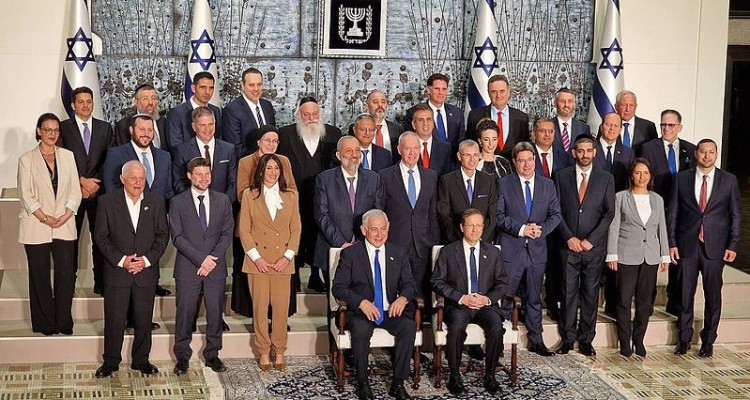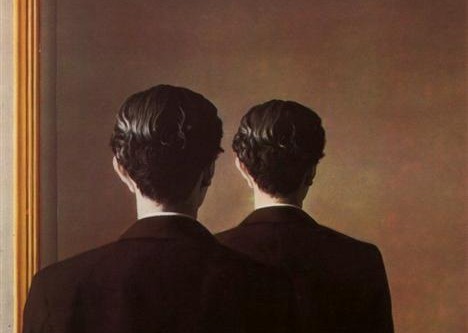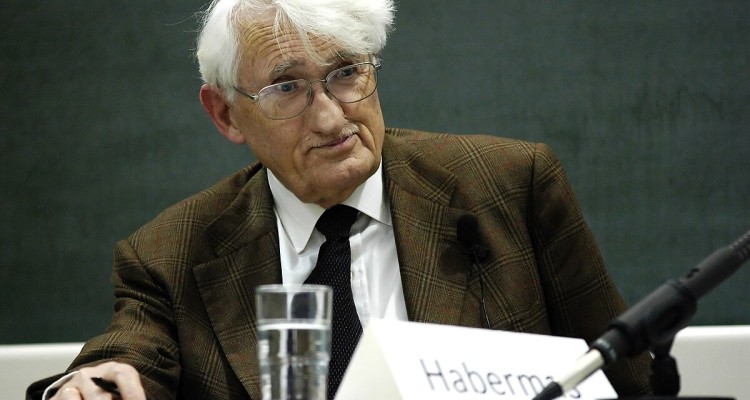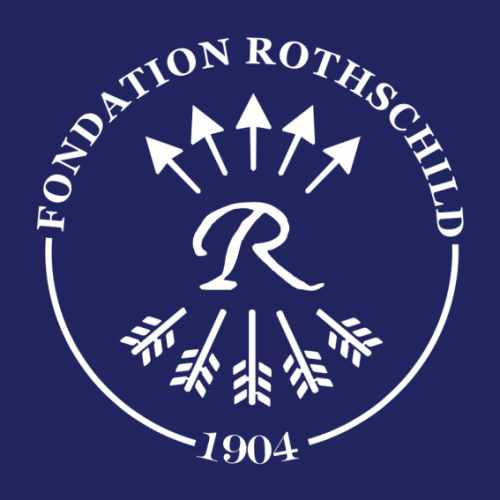A historian of religion at the Hebrew University of Jerusalem, Guy G. Stroumsa – starting from the shock felt by many at the results of the last Israeli elections and in front of a government in which the extreme right-wing nationalist and orthodox religious parties figure prominently – reviews the new political situation in Israel. He emphasizes the religious dimensions of the problem and the difficulties that the history of Zionism has faced in its attempt to resolve, without success, the question of the interweaving of the religious and the national in Israel.

It was a shock to many in Israel and abroad that, following the results of the November 2022 elections, a right-wing and extreme right-wing government was formed, made up, alongside Likud, of religious parties, all of which are orthodox or ultra-orthodox, and whose leader, Benjamin Netanyahu, represents, in a way, the “left wing”. Mutatis mutandis, we can remember the shock of the victory of Menachem Begin, the leader of the nationalist party Herut, in the 1977 elections, which was understood at the time, rightly, as signalling the end of the era of socialist power.
Bruno Karsenti and Danny Trom have recently expressed in K. their concern and dismay at what seems to herald, with the victory of various illiberal tendencies in Israel, a brutal and profound estrangement between Diaspora Jews and those in Israel. Let us note immediately that if certain tensions, now exacerbated, exist between Israel and the Diaspora, it is not obvious that they are only, or mainly, of a political nature. In Paris, a Jewish shopkeeper asked me the day after the elections if I was satisfied with the results. To my negative answer, he retorted: “Really? Here, everyone is happy with Netanyahu’s victory!
Towards a theocratic state?
Like so many citizens of Israel, I am terrified by the radical nature of the legislative revolution announced by Yariv Levin, the Minister of Justice, which would put an end to the separation of powers and sound the death knell for democracy. I also don’t know, of course, whether this brutal programme will ultimately succeed, and share Karsenti and Trom’s concern and dismay. We must hope that the shock will quickly turn into a continuous wave of multiple protests, in very broad segments of the population. Such a wave could force the government to abandon its most nefarious plans. In these few off-the-cuff reflections, offered from Jerusalem as a contribution to the debate, I wish to emphasise the religious dimensions of the problem. I will point out some intrinsic ambiguities, which will perhaps make it possible to see a little more clearly how we got here
The shock today is not so much due to Netanyahu’s return as prime minister as to the coalition he has forged, which is exclusively made up of religious parties – (note that in Israel, non-Orthodox religious currents, conservative or reformed, have no voice, and their representatives have to be content with a folding seat at best), and all of them to varying degrees nationalistic, misogynistic, homophobic, xenophobic and racist. For a long time, the religious parties (and the majority of their public) have clearly identified themselves as ‘right-wing’, which in Israel refers more to nationalist and xenophobic instincts – and thus, above all, to the refusal to work for a decent solution to the conflict with the Palestinians – than to a capitalist economic policy.
Aryeh Deri, twice convicted of corruption, remains the undisputed leader of Shas, and Netanyahu considers him an essential ally. The Supreme Court has just decided, on 18 January 2023, that he cannot be part of the government under any circumstances, and that he must therefore resign (or that the Prime Minister dismisses him) from his functions as Minister of the Interior and of Health. As for Itamar Ben Gvir, a former admirer of Rabbi Meir Kahane, whose party was disqualified in 1988 for racism, his remarkable success in the last elections probably reflects a protest vote, often from young ultra-Orthodox, but it is difficult to know if this success will be sustained.
The religious right and extreme right are calling for ethnocentric identity politics, with the protection and extension of various expressions of Jewish tradition in the public space. In the aftermath of the elections, the religious reaction is expressed in such a rapid and multifaceted way that it sometimes seems like a real revolution, carried out in parallel with the legislative revolution. Until now, Israel has always insisted on its dual identity, both Jewish and democratic. The balance, always precarious, between the Jewish character of the state, proclaimed in the Declaration of Independence, and its democratic character, which implies legal and social equality between all citizens, regardless of gender, religion, or ethnic identity, is in immediate danger of disappearing. Voices expressing a clear preference for a Jewish rather than a democratic state are becoming increasingly strident. Are we heading for a theocratic state? In the talks to form the new government, the religious parties seem to have got almost everything they wanted from Netanyahu, including, or especially, their demand for full government funding for their schools, while refusing to offer their children a modern education, including at least a minimum of maths and English. It remains to be seen, of course, whether Netanyahu’s promises will all be translated into action.
Although the victory of the nationalist and religious right is clear, the fact remains that about half of the voters did not want it. The defeat of the so-called “centre-left” is mainly the result of the lack of unity of the opposition, serious errors of judgement, and above all the refusal of the centre-left and the majority of Arab parties to present a united front against Netanyahu and his allies. As reflected in the election results, the political polarisation seems to indicate that Israeli society is half open to the world and to progress, and half inward-looking and reactionary. In fact, the sociological reality and the power of identity politics are infinitely more complex than a binary opposition between dynamism and conservatism.
Since its foundation seventy-five years ago, Israel has been unable to satisfactorily resolve the problem of the relationship between religion and the state. In a state that is theoretically secular, personal status (especially marriage and divorce) is still governed by the official religious communities, as they were defined in Ottoman law (the millet, transmitted by the British mandate authorities to the Israeli and Jordanian legal systems).
For several decades, the religious parties, which largely represented Ashkenazi populations, remained divided between the ultra-Orthodox of the Agudat Israel (now Yahadut Hatorah), or haredim, who were often anti-Zionist, or at least non-Zionist, while for the Mizrahi (Mafdal) party, in the Zionist movement, the return to the Holy Land represented the redemption of the people. With the Six Day War, religious Zionism was profoundly transformed, becoming the standard-bearer of a messianism rooted in the colonisation of the new ‘liberated’ lands, spearheaded by the Gush Emunim movement. In a long television interview shortly before his death in 1982, Gershom Scholem expressed his deep concern about Gush Emunim, whose false messianism, reminiscent of the Sabbathist movement in the 17th century, threatened the very existence of Israel. For a generation, the Shas party, founded by the Iraqi-born Rabbi Ovadia Yossef, has enabled traditionalist Jews, known as ‘Oriental’ (mizrahim), although often from the Maghreb (‘West’ in Arabic), to assert both their cultural and religious identity.
It is in the religious question that Levin’s plan for a real legal revolution, which would complement the obscurantist demands of the religious parties, is interwoven. Israeli jurists are unanimous in considering that such a revolution, removing in practice the independence of the legal power, would announce the end of the democratic regime. Beyond the conjuncture (especially, but not only, linked to Netanyahu’s legal problems) this legal and political revolution (or putsch) is presented as a counter-revolution, trying to erase the “damage” committed by legal activism, whose master builder, Aharon Barak, was for a long time President of the Supreme Court. For Barak, legal activism made it possible to establish, on the dual basis of Israel’s declaration of independence, read as the prologue to a future constitution, and a series of “fundamental laws” (i.e. laws that can only be revoked by an absolute majority in the Knesset) passed over the years, temporarily taking the place of the constitution that Israel never managed to acquire. In fact, the legal activism advocated by Barak reflects above all the awareness, and it’s clear and public affirmation, of a legal tradition dating from Israel’s first decade. To fully grasp the stakes of the tragedy that is being played out at this very moment, one must return to certain aspects of Zionist history.
Multiple Zionisms
Even before the end of the nineteenth century, the Zionist movement was unable to free itself from some fundamental ambiguities. The first of these ambiguities was the very concept of a “Jewish state”. When, in 1896, under the shock of the Dreyfus Affair, Herzl published his pamphlet, Der Judenstaat (literally: The State of the Jews) it was not a state whose law was faithful to Talmudic Judaism that he dreamed of, but a state for the Jews, where they could find refuge from the anti-Semitism raging in Europe, in the West as well as in the East, and forge a new national identity by erecting a dignified society, bearer of universal values.
Another conception of the idea of a Jewish state appeals to a substantivised religious identity: a Jewish state is a state where Judaism reigns in law. But what is Judaism? In ancient times, religious identity and ethnic identity were usually not different from each other. In this sense, the Jewish religion reflected the ancestral practices and beliefs of the Jews, and conversion to Judaism implied accepting to be part of the Jewish people. Although this goes against our cultural assumptions, it could be shown that both early Christianity and early Islam retained such an approach to religion as a form of a new ethnic identity (at least in the metaphorical sense).
The second of these ambiguities has to do with the very geographical location of this Jewish state. Some of the Zionist thinkers and leaders, especially those from Western Europe, sometimes quite distant from religious tradition and culture, favoured the so-called “territorial” solution, for which the Jewish state should be established anywhere, and as soon as possible – for example in Uganda. Such a solution would be fiercely opposed by other delegates to the Zionist congresses, especially the Ostjuden, who came from the communities most threatened by antisemitic violence, especially in the Russian Empire.
In fact, the polemic between those demanding a return to Zion and the “territorialists” refers to two clearly different attitudes from the outset: the first supports a concrete and immediate political solution; the other, who will win the game, insists on the dream of a return to the ancestral homeland. These two attitudes can be compared with two conceptions of Zionism. One insists on the revolution it represents in the modern history of the Jewish people, which must free itself, at the same time as the domination of the nations, from the chains of religion. The other, in order to erase the humiliation of exile, imagines a real return to the sources, to the mythical past of the Davidic kingdom: the return to the holy land and the holy language as a prologue to a rebirth of the eternal religion of Israel, as inscribed in the Torah (and in the Talmudic tradition), with the Temple at its centre. Although the religious version of Zionism remained a minority within the Zionist movement for a long time, the secular culture of the socialist Zionists not only failed to erase it, but even failed to oppose it with a coherent vision of a non-religious Jewish history and identity that was convincing to the Jewish masses in Europe and in the countries of Islam. In fact, this dualistic tension between two antagonistic conceptions of Jewish life in the Diaspora, and thus of its transformation through the creation of a Jewish state, a tension that has never been overcome, is rarely acknowledged in historiography. A notable exception, however, is Situation du sionisme, by Jean De Menasce, published in 1928. De Menasce, whose father was President of the Jewish community of Alexandria, was for a time the personal secretary of Chaim Weitzmann, before converting to Christianity, joining the Dominicans and becoming a valuable Iranian.
The historical specificity of the Jews lies in the fact that, for complex reasons, they retained this coincidence between ethnicity and religion, whereas it had disappeared almost everywhere else. Neither the Christians nor the Muslims were surprised by this coincidence, which they simply considered outdated by the religious universality that their theologies proposed. In the long Middle Ages, Jewish ethnic identity was always considered by the Jewish intellectual tradition to be in exact accordance with religious identity: no Jewish people without its Torah, wrote Saadia Gaon in the ninth century. Throughout the centuries, and in all diasporas, the hope of a return to the land of Israel remained both religious and national. It is only since the Enlightenment and the era of European nationalism that this specificity of Jewish identity is less easily understood.
Both political leaders and Zionist thinkers failed to cut the Gordian knot of the interweaving of religion and nation. It is in this failure that one must see the deep reason for the Knesset’s inability to formulate a constitution – a constitution whose absence is so cruelly felt today. This failure stems mainly from the fact that for the members of the religious parties, the Torah alone, in its broadest expression, represents the constitution of the Jewish people.
Ben Gurion, who strove to maintain his grip on religious orthodoxy, made a serious mistake in thinking that the ultra-Orthodox communities would remain “enclave societies” of little numerical or political significance. Furthermore, he failed in his attempt to bring together a Sanhedrin of the Jewish world to offer a new, secular definition of Jewish identity.
Who is a Jew, or who is an Israeli?
One of the most striking successes of Zionism is that virtually the majority of the Jewish people now live in Israel, a prosperous country whose per capita gross domestic product (GDP) in 2021 was $52,170 (in the same year it was $43,660 in France). The renaissance of Hebrew, both as a spoken language and a language of modern culture, is no less impressive. To my knowledge, such a linguistic renaissance remains a unique phenomenon; the Irish, for example, never succeeded, despite their best efforts, in replacing the English of the hated conquerors with their Gaelic language.
In 2018, the Knesset passed a basic law defining Israel as the nation-state of the Jewish people. This law seems to me particularly unwelcome, unnecessary and harmful. It immediately succeeded in deeply insulting the Arab and Druze citizens of Israel, for whom it means that they remain second-class citizens. One can only hope that, like so many laws across countries and ages, this one will in fact remain a dead letter. It was not necessary for Israeli Jews, including the non-practising majority, to identify themselves primarily as Jews, and for Israel to be regarded everywhere as a natural Jewish state. (One example among many: an Israeli diplomat was once told by a prefect in a province of France: “We have many of your people here. The prefect was of course referring to the Jews living in the big city of the department). The “Canaanite” movement, founded in British Palestine by a few Hebrew-speaking intellectuals wishing to free themselves from Jewish identity, has totally failed. The Israelis are thus back to square one and do not question their Jewish identity.
The undeniable tensions between the diasporic communities and the Jewish population of Israel (and the Yishuv before 1948) are not primarily related to the issue of Jewish identity. The Diaspora and Israel represent the two poles of Jewish identity. If Israel remains inescapable for the Jews of the Diaspora, the latter has become inescapable for the Jews of Israel, whereas in the minds of many Zionist intellectuals of the last century, it was destined to disappear with the advent of the Jewish state.
It is necessary to emphasize here, especially in a review that defines itself as European, the central importance of by far the largest and most powerful of the diasporic communities, that of the United States (and also that of Canada). About one in ten American Jews identify themselves as Orthodox. The vast majority of American Jews express their Jewish identity in other ways, either by belonging to Conservative or Reform communities, or, very often, by not feeling the need for any religious practice. Politically and culturally, most American Jews are liberal (and vote for Democrats). The collusion in Israel between the political establishment and the most retrograde religious establishment in all fields makes the danger of an abandonment of interest in Israel by a large part of American Jewish youth immediate.
In these circumstances, perhaps the traditional question “Who is a Jew?” could be rephrased as “Who is an Israeli? In 2015, in an effort to propose a new approach to Israeli identity, Reuven Rivlin, then president of the state, proposed to speak of the “four tribes of Israel”, secular Jews, religious Zionists, haredim, and Arabs. Significantly, the three Jewish “tribes” are for Rivlin defined by the absence (or limitation) and level of intensity of religious practice. One could certainly propose other “tribes”, or note that Rivlin’s attempt to avoid reference to linguistic and cultural origins, particularly Ashkenazi and Mizrahim, does not seem entirely convincing. What matters is the recognition that Israeli identity is defined as plural. One can be, for example, Israeli and Russian, Ukrainian, American, or French (many hold two passports). One can also define oneself, like nearly 20% of Israeli citizens, as Palestinian-Israeli.
To my knowledge, there are still few sociological studies on the hundreds of thousands of expatriate Israelis, who often form real communities, as in Berlin, New York or Silicon Valley. In any case, these emigrants upset the binary equation between Jews in Israel and those in the diaspora. If they lived in the United States, a majority of Israeli Jews would probably identify themselves, depending on the intensity of their religious practice, as Conservative or Reform. The range of Jewish religious beliefs and practices is similar in Israel and in the Diaspora. The profound difference is the political power of the Orthodox parties, which exists only in Israel.
In contrast to the statist vision of political Zionism, for which the Diaspora was destined to disappear, Ahad Ha’am (Asher Ginzberg) called for the birth of a “spiritual centre” in Palestine, radiating out to all the communities of the Diaspora. The idea of Israel as a spiritual centre does not hold today any more than the idea of the end of the diaspora. The divisions are elsewhere, and the cultural, social, political and economic vectors between Israel and the Diaspora work both ways. Moreover, the two-headed character of the Jewish people has as much to do with the unstable cohabitation between religion and ethnicity (in the Diaspora as well as in Israel) as it does with the relations between Israel and the Diaspora. The identity of this two-headed people must be thought through in a new way.
In any case, the urgency of the situation, which is evolving day by day, requires all those who are aware of the immediate danger to Israeli democracy, Israeli citizens, Jews and Arabs, and Jews of the Diaspora, to join forces in an unprecedented protest movement.
Guy G. Stroumsa
Guy G. Stroumsa is Professor Emeritus of Comparative Religion at the Hebrew University of Jerusalem (Martin Buber Chair) and Professor Emeritus of the Study of Abrahamic Religions at Oxford University. He is a member of the Israeli Academy of Sciences and Humanities and holds an honorary doctorate from the University of Zurich. He has received the Humboldt Research Prize, the Leopold-Lucas Prize and the Rothschild Prize. He is a Knight of the Order of Merit. Among his many books: ‘The Idea of Semitic Monotheism: The Rise and Fall of a Scholarly Myth’ (Oxford, 2021); ‘Religions of Abraham. Histoires croisées, Genève’, Labor et Fides, 2017; ‘La Fin du sacrifice: Les mutations religieuses de l’Antiquité tardive’, Odile Jacob, 2005.










